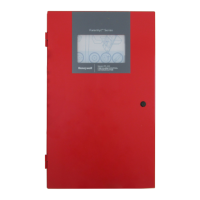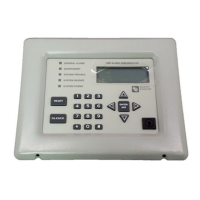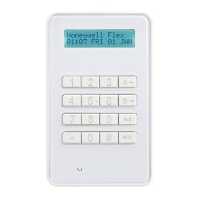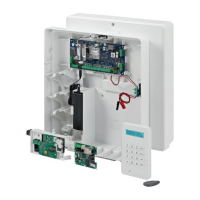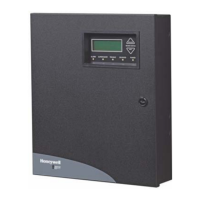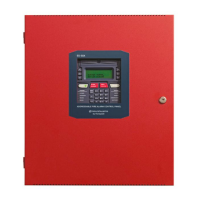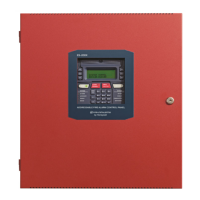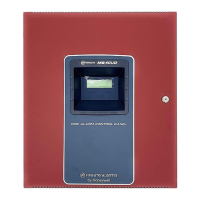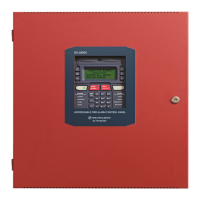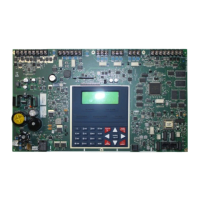IFP-75 Series Manual — P/N LS10147-001SK-E:E 4/6/2022 77
Section 8: Programming
This section of the manual describes how to manually program the control panel from the built-in annunciator. Each subsection describes
these menu options. All options described in this section can be performed using the HFSS Honeywell Fire Software Suite.
8.1 UL 864 Programming Requirements
8.2 Modules
This section lists the options available under the Module Option in the Program Menu. The types of modules available for the control panel
are the RA-100, RA-1000, or RA-2000 LCD Annunciator, 5824 Serial/Parallel input/output, 5880 LED Input/Output module, 5496 NAC
Expander, RPS-1000 Power supply, SK-NIC Network Interface Card, and 5865 LED Annunciator.
8.2.1 Edit Modules
The features you can edit when this option is selected are Module Name and Class of Wiring (Class A or Class B). To edit an existing mod-
ule, follow these steps:
1. Login to the panel.
2. Select 7 to access the Program Menu.
3. Press 1 to access the Module Menu.
4. Press 1 to edit a module.
5. Use the up or down arrow to select the module you want to edit.
Editing Module ID
6. Press the up or down arrow key to modify the Module ID.
Naming Modules
You can assign an English name to a hardware module to easily identify it on a display.
7. To edit a module name, press the up or down arrow to select each character for the modules name (or press the right arrow to bypass the
name edit). Press the right arrow to move to the next character.
NOTE: JumpStart auto-programming should be run Before any customized programming is performed. Thoroughly test the system after
running JumpStart because it automatically programs the system, searching for and configuring all SLC and SBUS devices it finds. JumpStart
allows you to confirm the integrity of the installation prior to performing any custom programming. After determining that the hardware is properly
installed, custom programming can be performed.
NOTICE TO USERS, INSTALLERS, AUTHORITIES HAVING JURISDICTION, AND OTHER INVOLVED PARTIES:
This product incorporates field programmable software. In order for the product to comply with the requirements in the Standard for Control
Units and Accessories for Fire Alarm Systems, UL 864, certain programming features or options must be limited to specific values or not used
at all as indicated below.
Programming Option Menu Item
Permitted in
UL 864 (Y/N)
Possible Settings Settings Permitted in UL 864
Time Options Auto-Resound Yes 4 or 24 hours 4 hours if you use SWIFT devices.
24 hours if you use other devices
Time Options Low AC Report Delay Yes 0-30 hours 1-3 hours
Communication Options Auto Test Time Yes 4, 6, 12, and 24 hrs 4 or 6 hours
Silencing Options Auto Silence Yes 0-60 minutes 3-60 minutes
Display Oldest Event Y (Enabled) Yes Yes or No Yes
N (Disabled) No Yes or No No
Alarm Verification
1
1 When the 2-count delay is active, you cannot use the Alarm Verification.
Alarm Verification Yes 60-250 seconds
(confirmation period)
0-60 seconds
Manual Release Switch
2
2 The Manual Release Switch shall override any pre-discharge delays resulting in an immediate release or start of the Manual Release Delay period.
The delay period shall be 30 seconds or less from the activation of the switch to the actuation of the releasing device(s).
Manual Release Yes 0-120 Seconds
(delay period)
0-30 Seconds
(delay period)
Table 8.1 Programming Requirements
NOTE: Use software version 7.0 or higher.
NOTE: You cannot edit the module ID for any internal devices or the SK-NIC.
NOTE: See Appendix A for instructions on how to edit the names.

